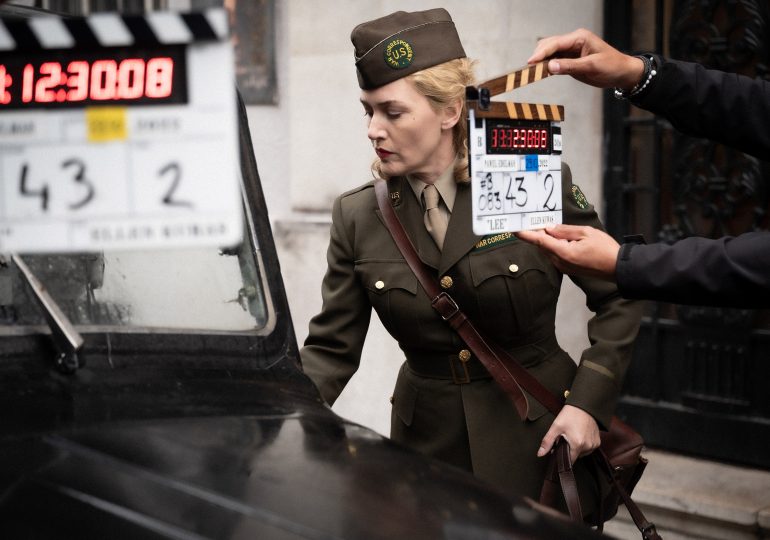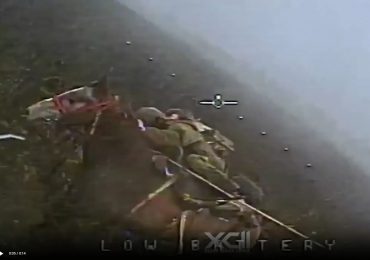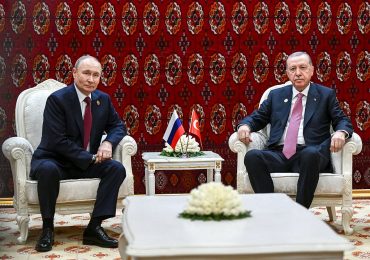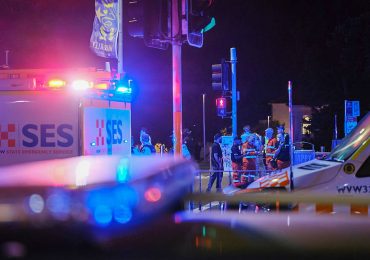When Kate Winslet set out to try and make a film about the photographer Lee Miller, she knew it couldn’t show everything.
“She lived such a vast life, it would have been impossible to make a film about all of it,” Winslet told TIME when speaking for a recent profile.
So Winslet, who produced the film and stars in it, decided to home in on one era in particular for what would become Lee, which premiered at last year’s Toronto International Film Festival and is out in theaters Sept. 27. The movie, directed by Ellen Kuras, mainly takes place during World War II when Miller was on the front lines, taking some of the most iconic photos to emerge from the Blitz, the liberation of Paris, and the Dachau and Buchenwald concentration camps. Winslet portrays Miller as an unapologetic force and pioneer in her field, who is specifically attuned to the suffering of those she captures in images.
[time-brightcove not-tgx=”true”]
The screenplay by Liz Hannah, John Collee, and Marion Hume has a flashback structure in which Miller, who was born in 1907 and died in 1977, is being interviewed later in life by a journalist, later revealed to be her son, Antony Penrose, played by Josh O’Connor. It’s an apt detail given that the film is based on a section of Penrose’s 1985 book The Lives of Lee Miller.
Penrose opens his biography by writing: “Lee Miller, fashion model. Lee Miller, photographer. Lee Miller, war correspondent. Lee Miller, writer. Lee Miller, aficionado of classical music. Lee Miller, haute cuisine cook. Lee Miller, traveler. In all her different worlds she moved with freedom. In all her roles she was her own bold self.” By the time we meet the eponymous subject of Lee, she has already lived some of those lives, and has embraced a life behind the camera.
Hilary Roberts, who wrote a book and curated an exhibition on Miller, once told the New York Times: “She may have belonged to the first generation of women entitled to vote but was well aware she lived in a man’s world. Photography offered Miller an outlet for her personal frustration and a means of taking control.”
Before stepping behind the camera she had been a model for Vogue and a student of as well as muse for the surrealist photographer Man Ray. She had a friendship with Picasso. But the movie actively divorces Miller from some of the more famous men in her life. One of the opening scenes essentially recreates Miller’s photograph “Picnic, Île Saint-Marguerite, Cannes, France, 1937” of her friends on holiday, the women topless and free. But Ray, who is present in that photograph, does not appear as a character in the movie.
“[Kate] wanted to be true to the sensibility of women, that they had a certain kind of freedom, there was a certain laissez faire in their lives,” Kuras says of those early moments. “I also think in juxtaposition to later on you see how remarkably different it was and how everyone came to realize the difference between what was before and what was happening during the war.”
For instance, we see Miller encounter one of her friends who was present at that party on screen—though not in the photo referenced above—Solange d’Ayen, played by Marion Cotillard, in Paris following the liberation. Solange, formerly glamorous, is now destitute and in despair.
The movie doesn’t cover much of Miller’s life following the war, which included her marriage to Roland when she was pregnant with Antony. She also grappled with depression, but in her later years found a love of cooking. Penrose wrote that it “appealed directly to Lee’s curiosity about exotic things.”
In the eight years it took to get Lee off the ground, Winslet worked closely with Penrose, the real-life son of Miller and artist Roland Penrose, who followed in his mother’s footsteps to become a photographer. Additionally, she consulted with Miller’s surviving friends, including Bettina McNulty, who worked for Vogue and was a fashion publicist. “When I spoke to her it was very hard to decipher the things that she was saying,” Winslet says. “But she shared things with me that she just didn’t share and I knew that she was sharing it because she could feel that she didn’t have much time left and there were things that she wanted to say.”
Beyond her eventual husband Roland, portrayed by Alexander Skarsgård, Kuras’ film focuses on two other key relationships during this time in Miller’s career: British Vogue editor Audrey Withers (Andrea Riseborough) and fellow photojournalist David Scherman (Andy Samberg). Also clear is her hatred for the Vogue photographer Cecil Beaton, played by Samuel Barnett, evident in Antony Penrose’s book and in the film. The catty words between them offer some of the movie’s lighter moments. (“Lee loathed him and found his conceit, his technical incompetence and the flaunting of his antisemitic feelings repugnant,” Penrose wrote.)
It’s with Scherman that Miller experienced the most devastating horrors of the war. He once said, “During the war, Lee and I were mostly inseparable. We were together at the linkup with the Russians, and we were together at Dachau. We moved into Hitler’s headquarters in Munich.” There, they worked together on one of the most indelible images of Miller’s career. At Hitler’s house, Miller stripped naked and got in the bathtub setting up a self-portrait of her washing. Scherman snapped the photo, which acts as a veritable middle finger to the dictator.
Lee also links Miller’s personal trauma to the abuses she witnessed during the war. When Miller was 7, she was sent to stay with family friends in Brooklyn while her mother was ill. During that time she was sexually assaulted and contracted a venereal disease. In the film, before the extent of her own abuse is revealed, Miller is seen defending a young French girl from harassment and expressing sympathy to a woman whose head was shaved after being accused of collaboration with the Germans. Winslet and Kuras therefore make the case that Winslet’s devastating past made her a uniquely empathetic journalist and artist.
“Lee’s extraordinary acceptance of self has inspired me,” Winslet says. “It inspired me every day I was playing her and has inspired me every single day since.”
Leave a comment








